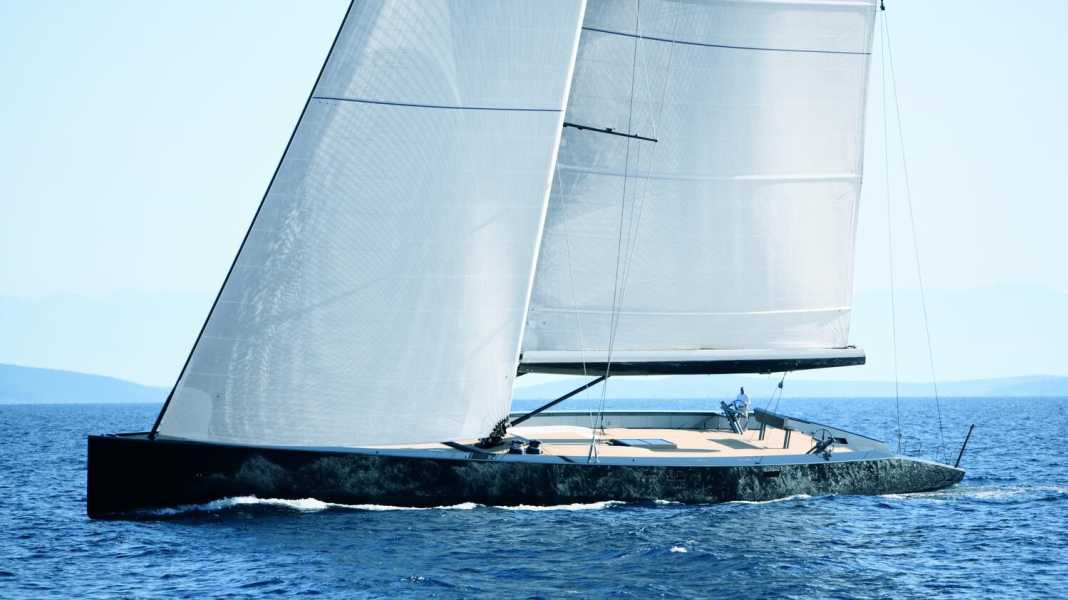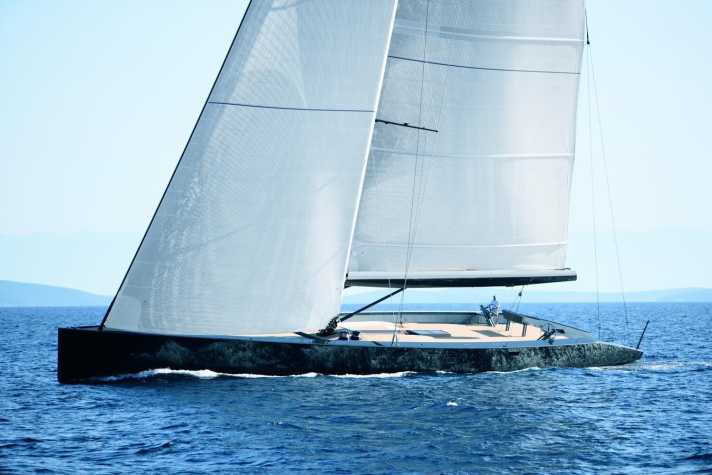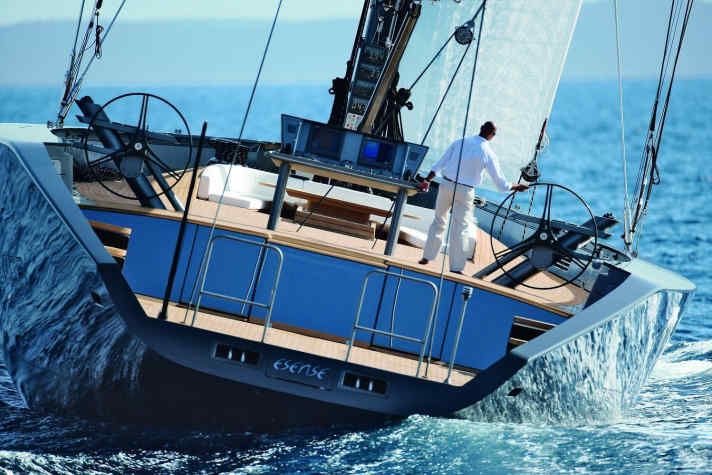

This yacht takes your breath away. She lies there like a rocket emerging at an angle from the water, shimmering grey-blue, mysterious, with the typical Wally bow thrust forward. The deck is wide, a centre cockpit dug in like a sandy hollow. The mast base is surrounded by huge winches. On the port and starboard ends of the deck, which is covered with long teak poles, the designers have placed two solitary helm stations, with an equally lost console between them, reminiscent of a keyboard on spindly legs. Otherwise: emptiness. Wally emptiness. Of course, the stepped terrace deck, which has long been part of the Wally standard, is not missing, as are the dark smoked glass windows looking out over the terrace onto the wake. Invented back then for "Tiketitan". The extremely wide bulwark only appears new at first glance because it was copied from old schooners. It surrounds the entire deck, turning it into a gigantic cockpit. It increases the freeboard by almost 90 centimetres and is probably also good for the dimensional stability of the hull. It leaves the stern open.
When casting off, the crew show why the deck is so conspicuously empty. Equipment for mooring, hoisting sails, trimming and everything else needed for enjoyable sailing disappears behind flaps in the bulwark. This is 60 centimetres deep. This is where the shipyard installed the bollards, the air intake for the air conditioning system, the engine compartment fans and the forecastle boxes. And this is where they installed Magic Trim, hydraulic rams for hauling the sheets and adjusting the rigging.

The sea is like lead, we motor into more open water. And we stretch our legs: no problem doing jogging laps, because the deck is gigantic. We don't feel the engine. It operates quietly and vibration-free in the well-insulated engine compartment. Its exhaust gas is discharged under water.
Enough time to look around: At the height of the steering wheels, we discover the hydraulics behind flaps. "Trimming sails using winches," says Wally inventor Luca Bassani, "is backward and slow." Instead, Italian manufacturer Cariboni provides us with its flexible Magic Trim tackle, whose opposing rollers are pushed apart by a hydraulic ram, thus shortening the furling section extremely quickly. "'Esense' hauls and furls its sheets within seconds," says Bassani, "sensitively controlled via proportional joysticks: a light tap for slow trimming, a firm push for fast hauling and furling. All from the helm stations."
